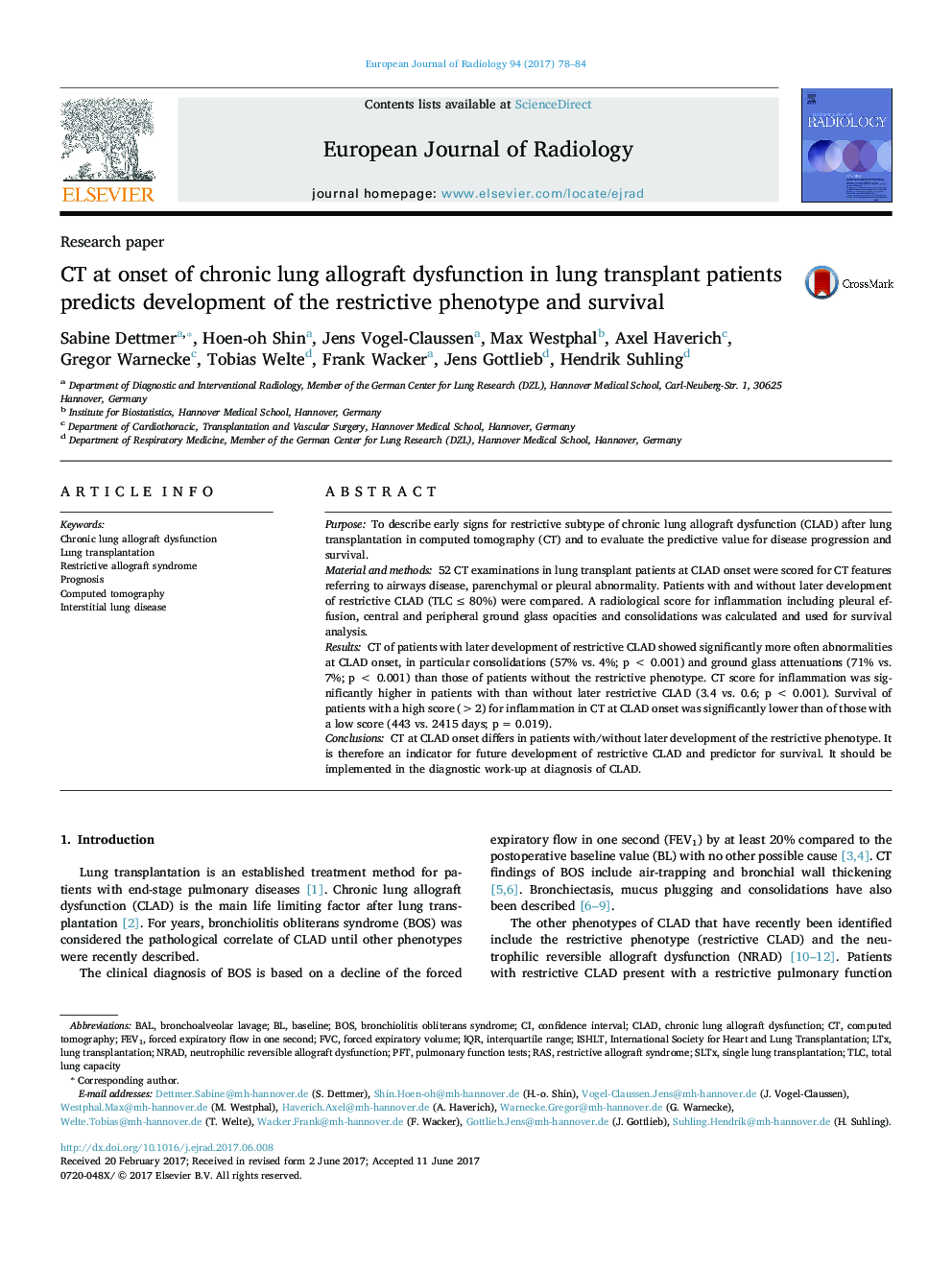| کد مقاله | کد نشریه | سال انتشار | مقاله انگلیسی | نسخه تمام متن |
|---|---|---|---|---|
| 5726250 | 1609726 | 2017 | 7 صفحه PDF | دانلود رایگان |

- CT in CLAD-patients with and without development of restrictive phenotype differs significantly.
- At CLAD onset inflammatory changes indicate future development of restrictive phenotype.
- A high CT score for inflammation at CLAD onset is combined with significant lower survival.
- CT indicates the development of restrictive CLAD-phenotype before becoming clinically apparent.
- Inflammatory pattern in CT at CLAD onset correlates with a lower survival.
PurposeTo describe early signs for restrictive subtype of chronic lung allograft dysfunction (CLAD) after lung transplantation in computed tomography (CT) and to evaluate the predictive value for disease progression and survival.Material and methods52 CT examinations in lung transplant patients at CLAD onset were scored for CT features referring to airways disease, parenchymal or pleural abnormality. Patients with and without later development of restrictive CLAD (TLC â¤Â 80%) were compared. A radiological score for inflammation including pleural effusion, central and peripheral ground glass opacities and consolidations was calculated and used for survival analysis.ResultsCT of patients with later development of restrictive CLAD showed significantly more often abnormalities at CLAD onset, in particular consolidations (57% vs. 4%; p < 0.001) and ground glass attenuations (71% vs. 7%; p < 0.001) than those of patients without the restrictive phenotype. CT score for inflammation was significantly higher in patients with than without later restrictive CLAD (3.4 vs. 0.6; p < 0.001). Survival of patients with a high score (>2) for inflammation in CT at CLAD onset was significantly lower than of those with a low score (443 vs. 2415 days; p = 0.019).ConclusionsCT at CLAD onset differs in patients with/without later development of the restrictive phenotype. It is therefore an indicator for future development of restrictive CLAD and predictor for survival. It should be implemented in the diagnostic work-up at diagnosis of CLAD.
Journal: European Journal of Radiology - Volume 94, September 2017, Pages 78-84